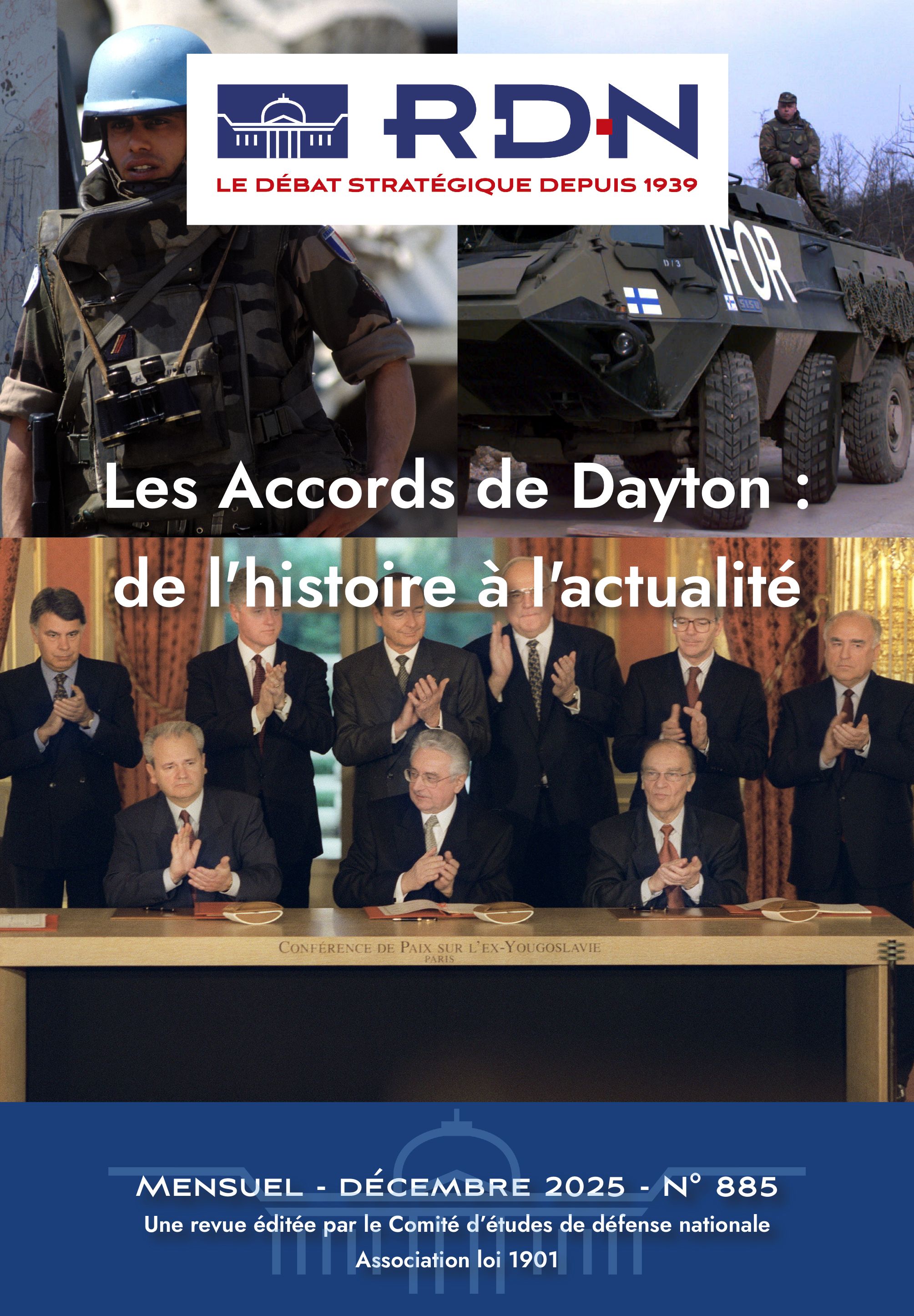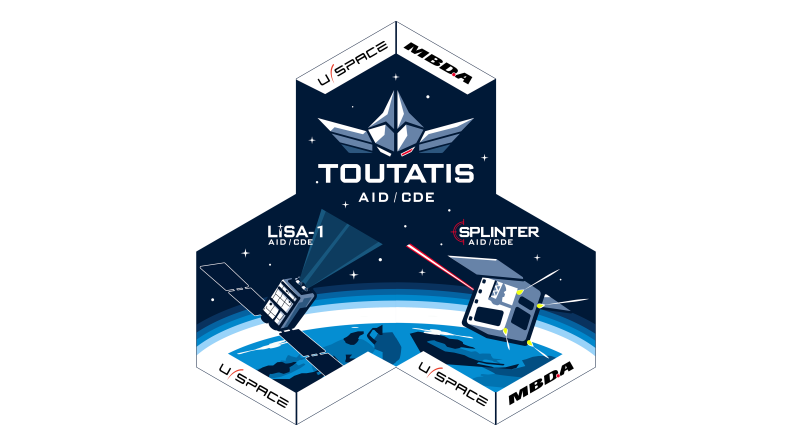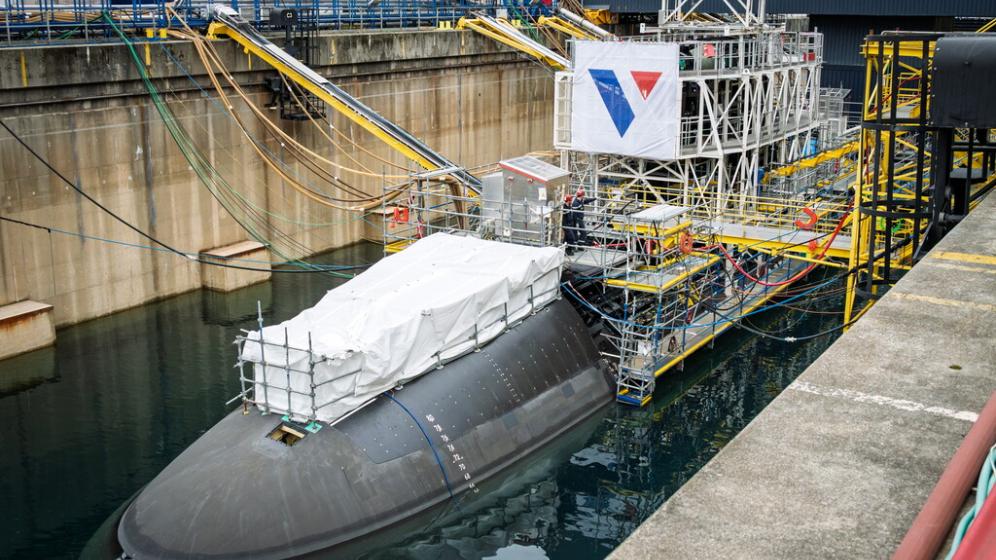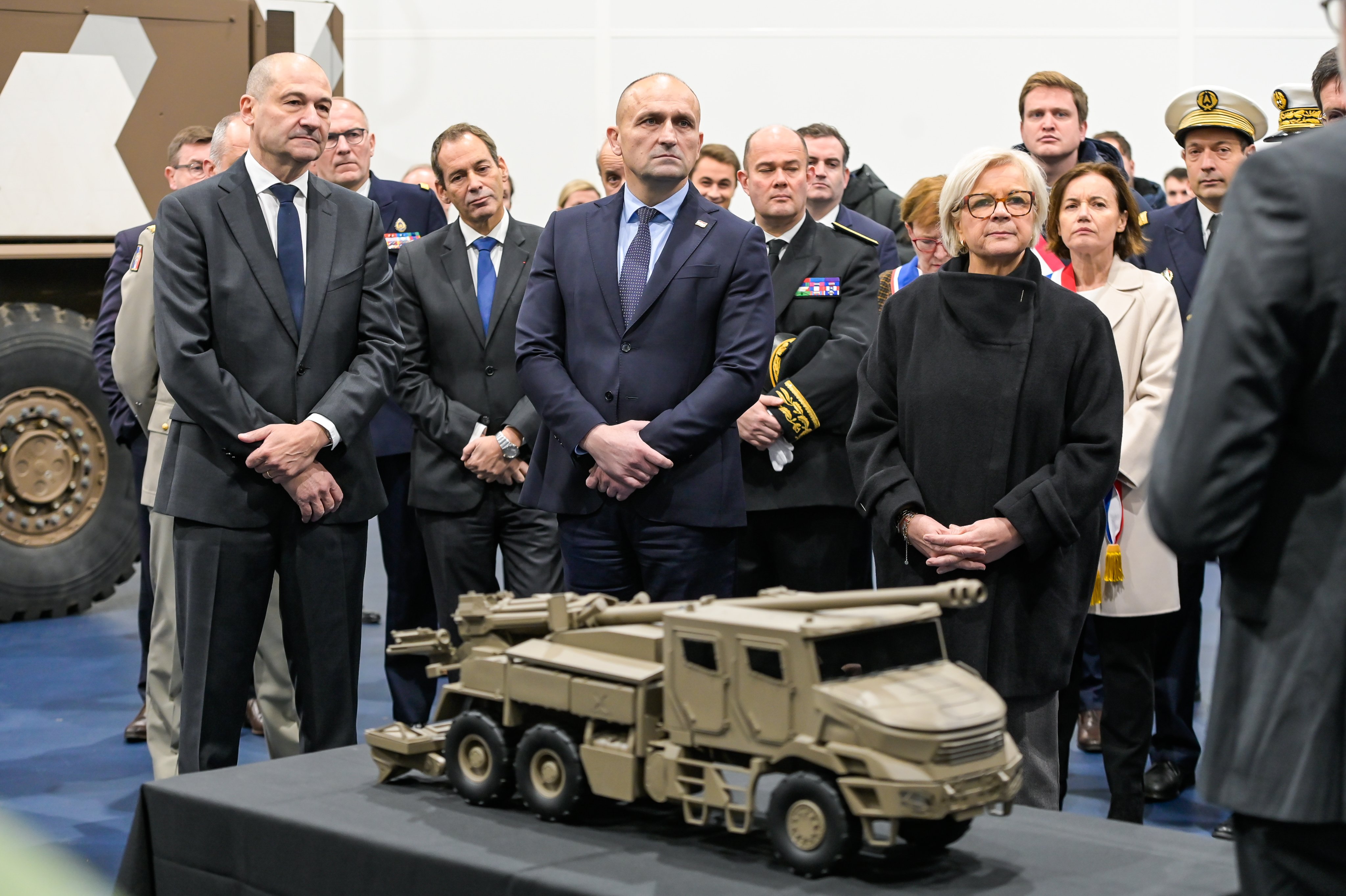European countries find themselves in the middle of a procurement trilemma, unable to achieve major economic advantages, the greatest possible strategic independence and relatively low procurement cost all at the same time. The different procurement strategies examined in the light of this trilemma establish the price of sovereignty.
The Price of Aeronautical Sovereignty in Europe: an Economic Approach
The continuing between Russia and Ukraine is having consequences throughout the world. European and NATO Member Countries are involved in particular through the various types of aid they are offering. After just over a year of conflict, and without claiming to be exhaustive, a number of lessons can be learned about policies for procurement of aeronautical material. Among them, the return of attrition with its implications on logistics, maintenance, stocks which need a certain critical mass: the role of ground-based air defence, effective and well-planned aeronautical doctrine and, more broadly, the ability of economies under budgetary constraint to transition towards an economy of war preparation, if not actually a war economy, are also put into perspective. From a historical point of view the latter notion indicates that all economic means are allocated to defence as part of the planning of arms production. In addition—and a direct consequence of the conflict—the donations of aircraft by some European countries to Ukraine will probably speed up their replacement, particularly in those countries which still have fleets inherited from the former USSR and for whom the war in Ukraine is an opportunity to break with the past (For example, the MiG-29 Fulcrum given by Poland and Slovakia).
Given this rapid evolution, which is incomparable with anything experienced in the past twenty years, these lessons will probably lead to changes in procurement practices. European countries in particular are committing to a new cycle of investment in, and renovation of, equipment, which will expand in the coming decade and which will shape their air forces for years to come. It is therefore reasonable to ask about the principal structural factors that guide a country’s procurement policy for defence aeronautical equipment.
After studying the principal characteristics of procurement choices we will show that in Europe, the structural characteristics of supply and demand regarding procurement of equipment highlight a trilemma: technological challenges of defence equipment mean it is not possible to achieve concurrently three major aims of procurement policy—economic and technological spin-offs, strategic independence in terms of industrial skills and low unit cost.
Table 1: Principal factors influencing the procurement process (Source: authors)
|
External strategic environment |
Domestic strategic environment |
Economic constraints |
|
External threats Alliance networks |
National political agenda Presence and extent of defence industry |
Level of GDP Defence budget Equipment cost |
The principal factors that drive nations’ procurement policies
Before looking at defence procurement policies, we’ll sum up the main factors that influence countries in their decisions.
First, external strategic considerations: the presence of an external threat to a country will drive procurement choices. Where there is a common threat, countries can cooperate to develop and produce their own aircraft or to buy aircraft off the shelf from their allies, particularly within the general framework of alliances.
Second, the domestic strategic environment is linked to the presence of defence industrial companies able to design, produce and support the equipment. This is a critical industrial constraint, since countries can be reluctant to abandon industrial capabilities for reasons of sovereignty or because recovery of lost capabilities is highly uncertain and costly. The procurement process therefore suffers from national bias.(1) That is one reason which explains the fragmentation of European defence industry.
Third, the strong budgetary constraints. Defence budgets have long been used as variables of adjustment: the policy of austerity that followed the 2008 economic crisis severely hit European defence budgets. The current trend (since 2014 in particular) in almost all European military powers is nevertheless towards increased defence spending. Moreover, since defence equipment requires high-level technology, inflation in the arms sector is structurally higher than in the civil sector and consequentially each nation’s defence equipment buying power tends to diminish over time.
The various methods of procurement
The different procurement strategies possible, ranging from national preference (and independence) to international preference (so dependence) are worthy of study. Other intermediate strategies include cooperation and production under licence.
National production
Technically, a country can design, produce and provide the operational support of its equipment. It reflects the fact that defence industrial policy is a central element of defence policy, particularly in the logic of a strategy of assets.(2) This choice has a number of advantages: initially there are questions concerning strict self-sufficiency, to avoid being dependent on foreign actors, but there are also major stakes in terms of employment, high value-added industrial activity, technological spin-offs and the reactivity and adaptability of the industry in case of conflict.
National preference nevertheless carries a high cost, especially in economic terms. A country has to bear the inherent costs at all stages of the equipment life cycle. Additionally, the monopoly situations created by the peculiarities of the defence market lead to an even higher cost connected with the preservation of national activities, which comes down to the price of independence.(3)
Cooperation
Cooperation might be seen as a benefit of club membership: it allows sharing of the R&D effort needed for development of material and its associated risk. The incentive to share costs is greater in view of evidence which shows that the R&D burden for defence equipment, while it has always been heavy, has greatly increased since the 1980s. Cooperative programmes allow some standardisation of equipment, favouring interoperability and genuine military added value in terms of greater power.
On the other hand, cooperation has a cost: the many diverging requirements at the start, and the changes to specifications during the programme add to development costs and delays, and to increased complexity throughout the supply chain, thus further programme coordination costs. Countries can benefit from cooperative programmes to fulfil the aims of their national industrial policy, notably during the development phases, by acquiring technological and industrial skills they lack, or have yet to develop fully. The requirement for a fair return on investment leads to multiplication of production sites in Europe, which partially erases the economy of scale and honing of skills initially sought. The Eurofighter project exemplifies such difficulties.
Production under licence
In contrast to cooperation, this type of procurement favours international collaboration by distributing production, though not the earlier design work. As a general rule, production under licence is subject to the technological domination of the country which designed the material, very often the United States.
Nevertheless, through production under licence countries see the opportunity to structure, develop or even save their defence industry through its upstream (R&D and suppliers) and downstream (for example, services, maintenance and retrofits) effects throughout the value chain. In Italy, for example, production under licence after the Second World War progressively consolidated the helicopter industry up to the merger of Agusta and Westland Helicopters in 2001. This merger led to the founding of Leonardo Helicopters in 2016.
Purchase off the shelf
Off-the-shelf equipment purchase on the international arms market is often at lower cost, but imposes a degree of technological, even operational, dependence on the supplier. For those countries that do not have a sufficiently developed defence industry, the only realistic choice is to import equipment purchased from a third-party country. From an economic point of view, the United States is a very well-positioned supplier of aeronautical equipment, since its economies of scale make it highly cost-competitive.(4) US military protection and the perspective of becoming member of a strategic alliance are strong incitements to buying US material.
A trilemma
Given the existing procurement methods and the limitations highlighted here, countries in Europe are faced with a trilemma of dependence, unit cost, and economic and technological advantages.
For example, by choosing to develop a wholly national programme based on entirely sovereign industry, a country will have to finance considerable R&D and production costs, but its dependence on foreign partners is minimised. A country such as France, which has a highly developed defence industry and whose nuclear deterrent is central to its strategy, will tend to favour this option. On the contrary, when a country buys off-the-shelf equipment it benefits from a lower price, which comes from the economy of scale, and the comparative advantages of the foreign manufacturer, but its dependence on foreign partners is increased. This is the case in Finland, Norway, Belgium and the Netherlands, for example, each of which operates a high proportion of American aircraft.
We can speak of a trilemma in the sense that no European country can at once achieve the three ideals of lowest cost, total independence and maximum economic and technological advantages. This trilemma slows the decision-making process, and can encourage withdrawal (from a project) or increase dependence on another country. Most European countries are therefore in a state of impasse, which explains in part their inability to make certain strategic decisions and the slowness of decisions regarding capability, in particular where they concern cooperative programmes.
This situation poses a problem when trying to draw lessons from the war in Ukraine, which is demonstrating the importance of uniformity of equipment, the quantity produced and of unit cost in maintaining a sustainable war economy. How can a country cater for the quantity factor whilst guaranteeing both air superiority and some form of independence?
European countries have great difficulty in creating something coherent and unified. Notable examples are the incompatible requirements in the 1980s which gave rise to two different projects, Eurofighter(5) and Rafale, and the current co-existence of two other major programmes, FCAS(6) and Tempest.(7) The US example shows that it is possible to overcome this trilemma if the domestic market is big enough—yet finding a big enough market is at the heart of the European problem. Individually each market is narrow but if the aircraft fleets of each country are summed together a ‘critical size’ emerges. To reach this size of market at a constant or increasing level of need, there are two possible routes: cooperation by harmonising needs, or exportation. But then, cooperation amounts to giving up some sovereignty, which leaves export—one of France’s preferred solutions, even though this strategy risks leading to external dependence.
Nevertheless, despite some success of Rafale in Europe (Greece, Croatia), it has to be admitted that the current situation benefits the United States. Its considerable weight historically in the aircraft fleets of some countries (for example, the F-16 effect in the 1980s in Belgium and the Netherlands, among others) will be felt again in the years to come with the Lockheed Martin F-35 Lightning II, whose European orders could exceed 600 aircraft, of which 500 are already firm.
This decision in favour of the United States is at the price of greater dependence, seen by some countries, France included, as a loss of sovereignty, especially for those countries that were not originally members of the programme: their economic and technological spin-offs could turn out to be more limited than initially forecast. For example, the Belgian press has suggested that the economic benefits could be as low as 700 million euros, compared with the 3.69 billion euros anticipated at the time the contract was signed—the entire value of the contract.
Figure 1: Number of actual and potential F-35 orders (© authors, from open sources)

Key:
Black: initial member countries of the F-35 project.
Grey: firm orders from non-member countries.
White: potential acquisitions by non-member countries.
Apart from the choice of traditional US partners, which was clear from the start of the programme, it is hardly surprising that some other countries whose aircraft fleet was already entirely of American origin would decide to acquire the F-35. Orders from some other countries, if confirmed, would be more surprising: for example, from the Czech Republic and Austria, whose fleets are composed respectively of former USSR or European (Eurofighter) aircraft. Moreover, the current environment is leading to even greater competition: Poland recently chose the KAI FA-50 Golden Eagle light combat aircraft built by South Korea.
* * *
Procurement choices are at the crossroads of technological, economic and industrial challenges. European countries are now held in the grip of severe budgetary constraints, industrial fragmentation and an exponential rise in aircraft production costs. The preferred strategy for future generation aircraft is therefore cooperation on major aeronautical programmes. It is as much a bringer of hope, especially if the economies of scale and acquisition of skills bear fruit, as it is of uncertainty over the division of industrial work and in the intellectual property of the technologies employed. Nevertheless, in relation to the trilemma discussed above, comparison with other choices would indicate that cooperation would work as long as the relative loss of sovereignty and economic return is compensated by sufficiently great advantages in unit purchase cost. Two factors for success have been identified for future programmes: applying the criterion of best man for the job to ensure industrial efficiency, and developing a credible business model that combines national orders and export contracts to give a sufficiently high production volume that guarantees the future of the aeronautical companies involved. ♦
(1) Kluth Michael, European Defence Industry Consolidation and Domestic Procurement Bias, Defense & Security Analysis, Vol. 33 n° 2, 2017, pp. 158-173.
(2) Henrotin Joseph, La stratégie des moyens dans le monde. Une diversité d’expressions [The strategy of assets throughout the world. A diversity of expressions], Défense et Sécurité Internationale (DSI), HS No 69, Dec 2019 to Jan 2020.
(3) Laguerre Cedric, Is the Defence Market Contestable?, Defence and Peace Economics, Vol. 20, No 4, 2009, pp.303-326.
(4) Tocoian Oana, The Home Market Effect in International Arms Trade, Economic Inquiry, Vol. 53 n° 4, 2015.
(5) Developed by the United Kingdom, Germany, Italy and Spain.
(6) Future Combat Air System (Scaf in french), currently under development by France, Germany and Spain.
(7) Developed by the United Kingdom, Italy and Sweden. At the end of 2022, Japan joined the project, which was renamed Global Combat Air Programme.







